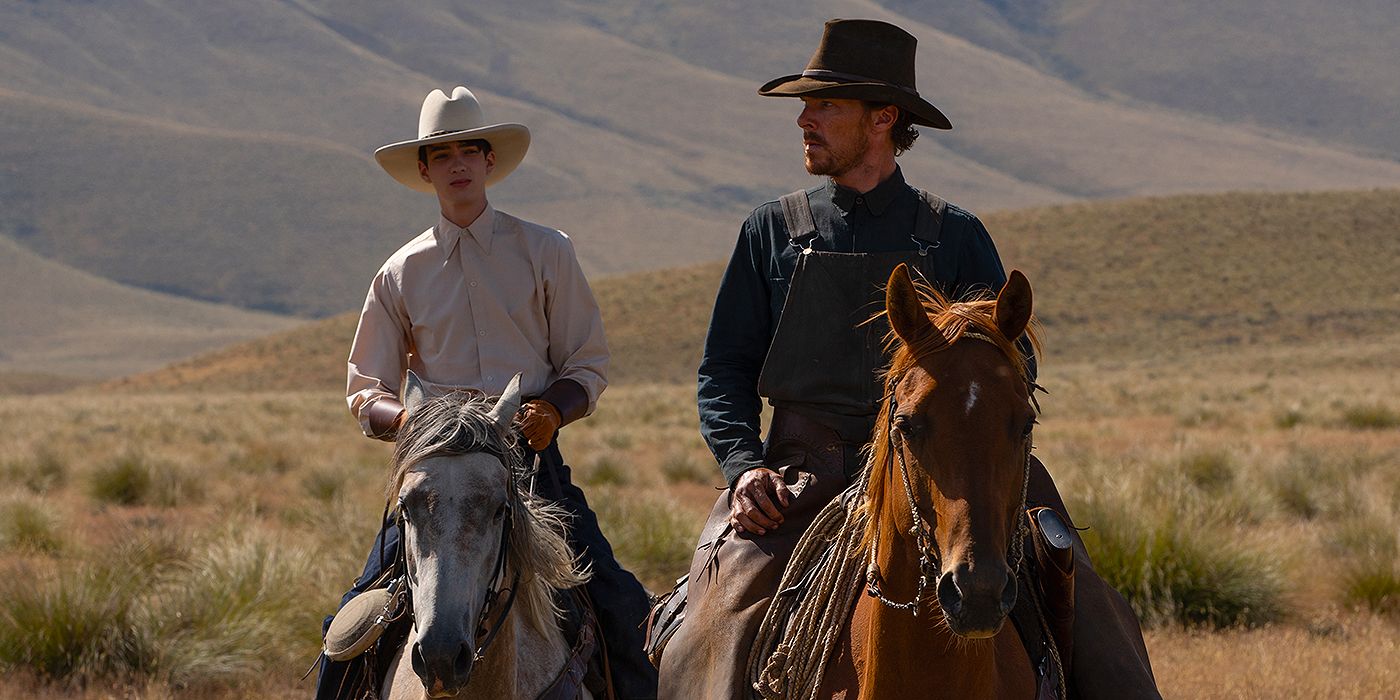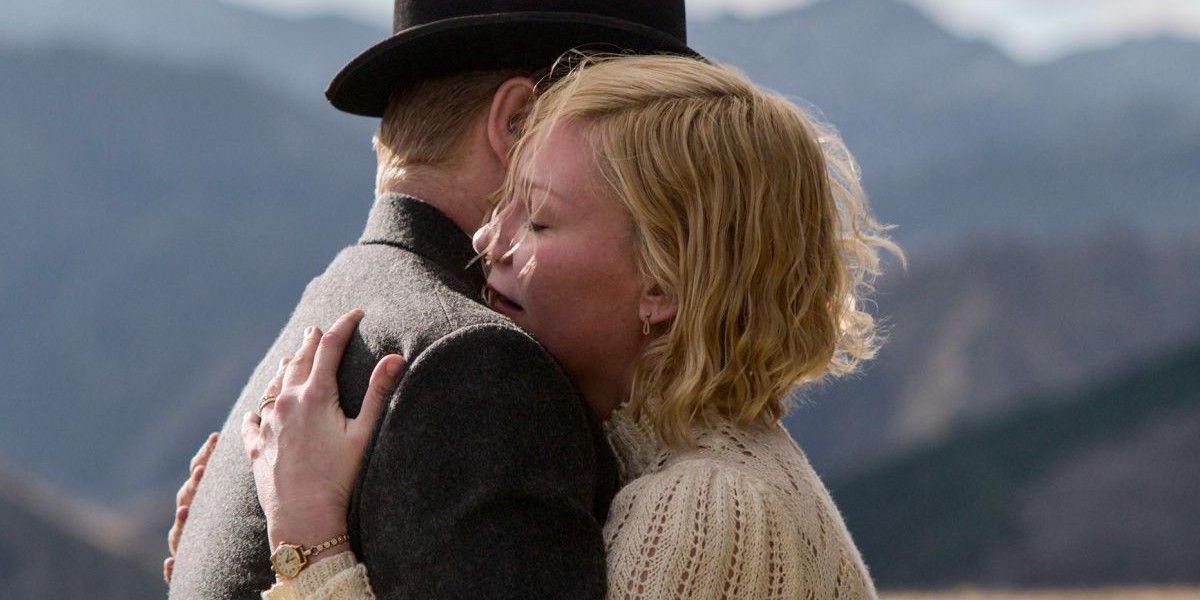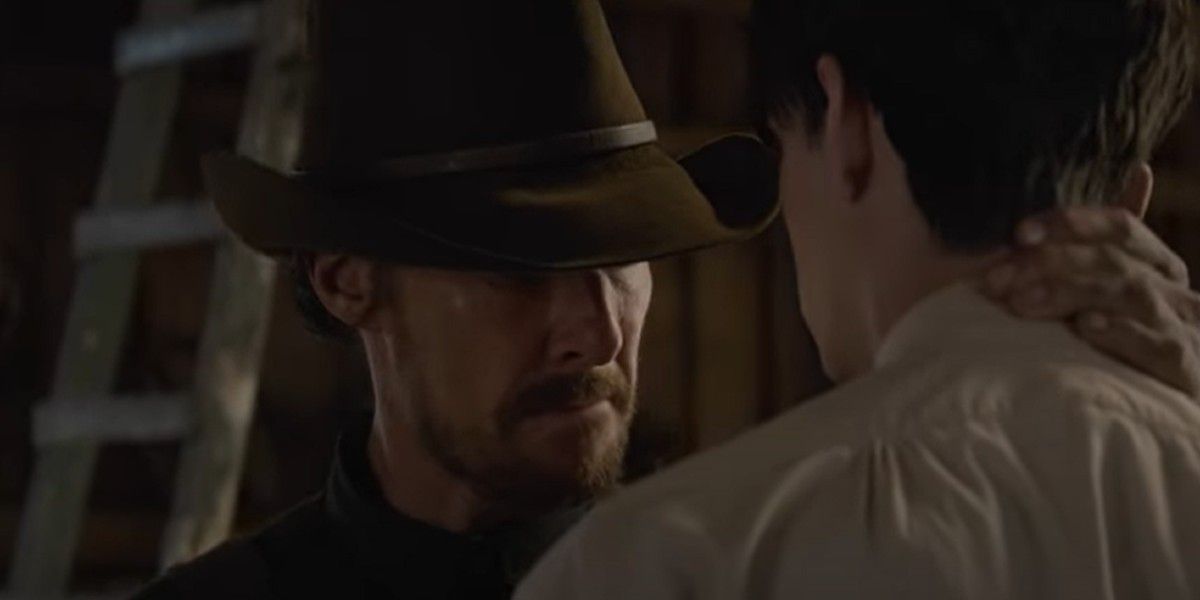WARNING: The following contains major spoilers for The Power of the Dog, now playing in select theaters and on Netflix.
Thomas Savage's 1967 book The Power of the Dog was strikingly ahead of its time, both in terms of its gender-related themes and its early neo-Western style. The novel wasn't a blockbuster in its day, but Annie Proulx (author of Brokeback Mountain) drew attention to it with an afterword she composed for its recent re-release, and now filmmaker Jane Campion has adapted it into what Netflix hopes will be a blockbuster of a film come Oscar nominations time. The movie version revolves around the same basic plot and characters and teems with the same raw-nerved tension as Savage's original work. However, one significant change (plus one performance choice) has led book readers and Netflix viewers to experience and interpret this gritty yet literary Western in very different ways.
The Power of the Dog tells the story of the Burbank brothers, George and Phil, who went to live and work on the Montana ranch their wealthy parents purchased around 1900. Phil (Benedict Cumberbatch) is the older brother; he's intelligent and cultured, but he prefers the hard manual labor that ranch life requires. George (Jesse Plemons), who Phil calls "Fatso," doesn't have Phil's analytical brain or general knowledge, but he's good with numbers and enjoys the simple pleasures of a nice suit and a mixed drink with an umbrella in it. The brothers, who are approaching middle age, still sleep together in their childhood bedroom, that is until George marries Rose (Kirsten Dunst), the mother of a teenage boy, Peter (Kodi Smit-McPhee), and the widow of the local doctor.
That doctor, named John Gordon, is the major difference between Savage's and Campion's versions of events. The novel begins years earlier as Dr. John Gordon and Phil Burbank are both young men trying to figure themselves out and make their way in the world. John is depicted as skilled physician who isn't as ambitious as he could be. He's a kind soul who often treats patients without making them pay, and he hasn't quite been able to provide his beautiful wife, Rose, with the life he promised her.
Some of the locals view him as soft, and gossip only intensifies when Rose gives birth to a strange, sickly son named Peter. While Peter endures harassment at school, his father has a run-in with Phil and his crew. The cruel rancher then berates and badly beats John. He tries to recover, physically and emotionally, but it's not long before he's self-medicating with alcohol and eventually hangs himself.
In the book, the reader is aware of John's deteriorating mental condition in his final days, and the manner of his death in unambiguous. Though he doesn't disclose any details before taking his life, it's reasonable to think Peter and Rose might know what happened between John and Phil, which gives Rose much more reason to loathe and fear her new brother-in-law. More importantly, it gives Peter a more specific motivation to murder Phil, as he's not just protecting his mother, he's avenging his father.
The movie completely cuts this first section of the novel and picks up in 1925, likely to condense the narrative. The past is alluded to on a few occasions like when Peter visits his father's grave. Later, when he and Phil have grown close, he confides in him about his father's suicide, though the audience knows this is already common knowledge in town, based on Phil's letter to his parents. Phil makes a big deal about the anniversary of their living and working together on the ranch, and since we can't learn about his relationship with Bronco Henry in real-time or through flashback memories, the truth about Phil is instead communicated as he caresses his mentor's saddle and scarf. The final act is still mostly the same in both tellings. Phil and Peter sense queerness and rage in each other, and things could easily end in romance or violence. Peter ultimately prevails when he lays a trap in which Phil poisons himself with anthrax-tainted rawhide.
In the novel, Phil's death is more dramatic. He staggers downstairs in the morning, despite his fatal illness, to try and perform his brand of literal toxic masculinity one last time. Viewers could take the same lesson from the book and the movie: Peter's authentic identity -- his true self-confidence, superior intellect and emotional awareness -- won out over Phil's actually quite brittle veneer of performed masculinity which gave cover to self-hatred. However, some viewers have come to another, more sinister conclusion.
What's a pretty typical mother/son dynamic on the page plays out a little differently on screen. The film begins with a voice-over in which Peter talks about protecting his mother and caring most of all about her happiness. He's more affectionate, and he remarks on her beauty, which, combined with the missing chapters about his father, has led some to believe Peter has an unhealthy obsession with Rose. In the film, Peter remembers that his dad worried he didn't have kindness in him. Some viewers have then suspected Peter could be a psychopath who killed his own father, too. This wasn't Savage's intention, but the idea did occur to Smit-McPhee, who factored it into his portrayal, thus adding to the changes seen in the film.
To see the big book to movie change, The Power of the Dog is on Netflix now.



